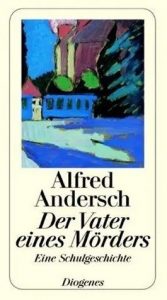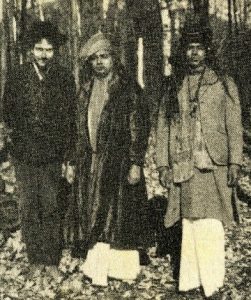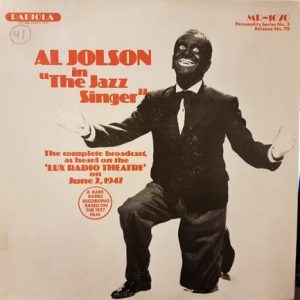by Jochen Markhorst
III This record tears out your backbone
 Paris Jackson, Michael’s daughter, is very angry. “I’m so incredibly offended by it, as i’m sure plenty of people are as well, and it honestly makes me want to vomit,” she tweets on Wednesday 11 January 2017. The outburst doesn’t relieve her as yet; moments later, she twitters on: “it angers me to see how obviously intentional it was for them to be this insulting, not just towards my father, but my godmother liz as well.” And nephew Taj Jackson also chips in: “No words could express the blatant disrespect.” The anger has been triggered by, incredibly, the honourable Ralph Fiennes. Specifically, by the makers of the terrific Sky Arts series Urban Myths, who have announced the airing of the episode “Elizabeth, Michael and Marlon”, a light-hearted portrayal of an alleged road-trip taken by Marlon Brando, Elizabeth Taylor and Michael Jackson. The in itself intriguing fact that the King of Pop is played by the white Ralph Fiennes proves unpalatable.
Paris Jackson, Michael’s daughter, is very angry. “I’m so incredibly offended by it, as i’m sure plenty of people are as well, and it honestly makes me want to vomit,” she tweets on Wednesday 11 January 2017. The outburst doesn’t relieve her as yet; moments later, she twitters on: “it angers me to see how obviously intentional it was for them to be this insulting, not just towards my father, but my godmother liz as well.” And nephew Taj Jackson also chips in: “No words could express the blatant disrespect.” The anger has been triggered by, incredibly, the honourable Ralph Fiennes. Specifically, by the makers of the terrific Sky Arts series Urban Myths, who have announced the airing of the episode “Elizabeth, Michael and Marlon”, a light-hearted portrayal of an alleged road-trip taken by Marlon Brando, Elizabeth Taylor and Michael Jackson. The in itself intriguing fact that the King of Pop is played by the white Ralph Fiennes proves unpalatable.
Sky Arts is discouraged by all the fuss, and cancels the episode, sadly. The controversy somewhat overshadows the success of the series. A week after the shitstorm on Twitter, on 19 January 2017, is the broadcast of the first episode, that will turn out to be one of the most successful: “Knockin’ On Dave’s Door”. Which is a “true-ish” staging of the apocryphal story of Dylan visiting Dave Stewart in London in 1987, but ringing the wrong doorbell. The lady who opens the door does not recognise him and says “Dave” has been called away. This Dave is, of course, another Dave altogether. Bob gets a cuppa tea and is allowed to wait for “Dave” in the front room. The episode is packed with small, witty, well-documented references to Dylan’s biography, and here in the front room the next one follows: Billy Lee Riley, Dylan’s rockabilly hero.
“Dylan” (great role by Eddie Marsan) rummages through the record collection, finds a Billy Lee Riley LP and soon “Red Hot” is blaring through the small working-class house at 145 Crouch Hill. Ange, the lady of the house, enters to check on things.
“This record tears out your backbone and kinda makes you feel grateful that it did all at the same time!” shouts “Dylan” above the music, a beautiful paraphrase of Dylan’s actual words in the MusiCares Speech, 2015:
“So Billy became what is known in the industry – a condescending term, by the way – as a one-hit wonder. But sometimes, just sometimes, once in a while, a one-hit wonder can make a more powerful impact than a recording star who’s got 20 or 30 hits behind him. And Billy’s hit song was called “Red Hot,” and it was red hot. It could blast you out of your skull and make you feel happy about it. Change your life. He did it with power and style and grace.”
Ange can also appreciate Billy Lee. Still: “It’s a great album, yes, but I prefer No Name Girl.” Bob looks at Ange for a moment, then turns off “Red Hot”, closes his eyes and sings “The girl I got ain’t got no name.” Amused, Ange sings along, which takes us to the bridge of “Peggy Day”:
The girl I love ain't got no name But I love her just the same She's a little peculiar but it ain't no sin She never know where she going but know were she's been
… and Dylan sighs in conclusion: “Oh man, he was a real deal.”
The bridge of “Peggy Day” offers, at least in terms of content, the only peculiar verse of the song;
Well, you know that even before I learned her name You know I loved her just the same An’ I tell ’em all, wherever I may go Just so they’ll know, that she’s my little lady And I love her so
… insinuating that the name Peggy Day is so overwhelming that you inevitably fall in love with its bearer – but as it so happens, Peggy is lovely to such an inconceivable extent that I fell in love with her even before I learned her name. Peculiar. Nameless ladies are often enough sung about, and usually it is considered a factor that contributes to the attractiveness of the lady. Adding to her mysteriousness, something like that. The best known is probably “The French Girl” by Ian & Sylvia, a song for which Dylan has an abiding fascination. He played it in ’67 in the Basement, rehearsed it in 1987 with the Grateful Dead (but eventually cut it from the setlist), the French girl appears in “Stuck Inside Of Mobile”, and twenty years later again in “Dark Eyes”. And she never gets a name, in line with Ian Tyson’s primal French Girl;
So you may find above the border A girl with silver rings, I never knew her name You're bound to lose, she's too much for you She'll leave you lost one rainy morn, you won't be the same
A beautiful, melancholic song, by the way, which somehow Dylan just can’t get hold of. The unforgettable Gene Clark does a better job – especially on the stereo remix of 1991, from which the hideous backing vocals from the mono original of 1967 have fortunately been radically cut out.
Anyway, there are many ladies who, like their male counterpart tall dark stranger, apparently become all the more exciting when we don’t know her name. “East Virginia Blues”, the song Dylan will play with Earl Scruggs in May 1970 (There I met the fairest maiden and her name I did not know), The Stones’ “Silver Train”, Thin Lizzy’s “Cowboy Song”… but the superlative is, obviously, Steve Winwood’s indestructible masterpiece for Traffic, “No Face, No Name, No Number” (1967);
Dylan himself has also been toying around with that sought-after mystery of anonymity before, in “Outlaw Blues” (1965);
I got a woman in Jackson, I ain't gonna say her name She's a brown-skin woman, But I love her just the same
… where it is of course striking that Dylan uses an identical line in “Peggy Day” to arrive at the rhyme; “I loved her just the same” versus “I love her just the same”. It reinforces the impression that the illogic of the bridge is due to uninspired rhyming, cutting and pasting by an improvising Dylan. Indeed, in both takes, the official one from Nashville Skyline and the first take found on CD1 of Travelin’ Thru: The Bootleg Series Vol. 15 1967-1969 (2019), we hear Dylan stumble and hesitate a bit, and both versions deviate from the published lyrics in the same place;
Well you know ever even before I learned her name
… Dylan sings on Nashville Skyline. And in that first take on Travelin’ Thru:
Well you know ever since before I learned her name
Clumsy. And just as clumsy, in fact, as rhyming with Billy Lee Riley’s “I loved her just the same” – a phrase used only to express “but still”. Like in Deep Purple’s “Hush” (She broke my heart but I love her just the same), in Conway Twitty’s “Hey Miss Ruby” (She don’t love me but I love her just the same), in The Everly Brothers’ heck of a melodrama “Rockin’ Alone” (The ones who forgot her she loves just the same), and in Dylan’s own “Outlaw Blues”, not least – just to name a few. Always songs, anyway, where the “I love her just the same” phrasing communicates a perfectly logical “yet”-message. More coherent than this weird variation in “Peggy Day”, the variation that seems to want to express in a failed way that it was love at first sight, that Peggy had already stolen my heart before I got to know her.
Yeah well, Dylan seems to think, while stumbling over his words. It’s just an album filler. I’ll never play it again anyhow. But just to be sure, he steers back to safe, uncomplicated country clichés to complete the bridge. “My little lady” from Jimmie Rodgers’ “My Rough And Rowdy Ways”, “I love her so” from thousands of songs, a snippet of Stanley Brothers (wherever I may go from “Riding That Midnight Train”)… no, this one won’t earn him a Nobel Prize. But what the heck.
To be continued. Next up: Peggy Day part 4
—————–
Jochen is a regular reviewer of Dylan’s work on Untold. His books, in English, Dutch and German, are available via Amazon both in paperback and on Kindle:
- Blood on the Tracks: Dylan’s Masterpiece in Blue
- Blonde On Blonde: Bob Dylan’s mercurial masterpiece
- Where Are You Tonight? Bob Dylan’s hushed-up classic from 1978
- Desolation Row: Bob Dylan’s poetic letter from 1965
- Basement Tapes: Bob Dylan’s Summer of 1967
- Mississippi: Bob Dylan’s midlife masterpiece
- Bob Dylan’s Greatest Hits
- John Wesley Harding: Bob Dylan meets Kafka in Nashville
- Tombstone Blues b/w Jet Pilot: Dylan’s lookin’ for the fuse
- Street-Legal: Bob Dylan’s unpolished gem from 1978
- Bringing It All Back Home: Bob Dylan’s 2nd Big Bang



